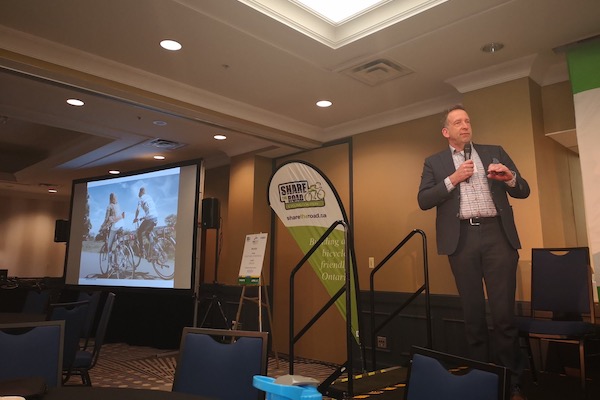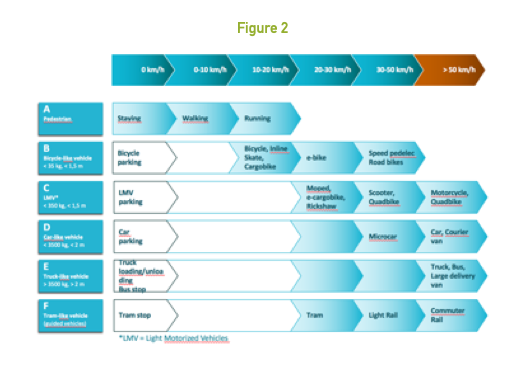A Framework for New Mobility
On the 1st and 2nd of April, members of our international team attended the Ontario Bike Summit, participating in conversations surrounded how cycling is progressing in the Canadian province. Mobycon Founder and Director, Johan Diepens, discusses how the emergence of new mobility options are changing the transportation landscape, and how cities can proactively prepare through the utilization of a new mobility framework we have developed.

Earlier this week, I attended the Ontario Bike Summit in Toronto, Canada. The range of topics included not only standard bicycles, but also the position e-bikes & e-scooters have in the urban landscape; namely should they be legal and what role do they play in transportation. We spoke about the need for a new-mobility toolbox – or framework – with a main focus on addressing the rapid growth in micro-mobility: e-scooters, hoverboards and other smaller e-mobility devices that have increased in popularity in recent years. I believe that through the following method, we can provide a good foundation for this framework.
Globally, cities are struggling with similar issues around balancing population growth, urban activities and the quality of the urban space. In many situations, the consumers of mobility – mobilists – have limited options when it comes to how they can move around the city. However, we are currently living in an interesting time for mobility; the choices on the “mobility menu” are increasing every day it seems. People are rediscovering cycling for transportation not only with the standard (city)bike, but also the rest of what can be considered the cycle family: e-bikes, e-scooters and hoverboards, among others.
The effect the discoveries are having on transportation in cities is happening fast. So fast that in many cases the legislation, infrastructure, education and strategic policies are playing catch up. But excitingly, within these new modes lies part of the solution to creating livable and pleasant cities for everyone.
In our work we have been examining these potential solutions and how best to implement them. The goal is to better prepare cities and allow them to be proactive to these changes rather than reactive, ultimately making it easier to integrate them into how people use them as tools for transportation. Whether traveling to work, school, the shops, to socialize or even take the dog for a walk, being ready for change will set them up for future success.
Our search for solutions began with one simple statement: “Everybody has the right to come home.” As it should be, safety is where we started. From that point of view, we explored all the transport modes currently used in the Netherlands and organized them by kinetic energy and operating speed within the city. In plotting these modes, the resulting pattern became the fundamental framework, creating Transport Families. Transport Families are comprised of modes of transportation with the same range of mass/speed and (dynamic) width (see figure 1).

The framework identifies six families: the pedestrian, cyclist, light motorised vehicle, car, truck, and tram families. Within each family exists a variety of unique family members. Figure 2 sets out the different members and their maximum operating speed within the city.

The outcomes of this framework can be applied as the basis for developing legislation as well as transportation planning and infrastructure design. It is well understood that most modes traveling at speeds of 30-km/h or less are significantly safer than those traveling at higher speeds. People are better able to safely respond to conflicts or, in the case of a collision, the severity is likely to be low. Therefore, this could be considered a natural upper limit for transport modes without requiring a licence, insurance or a helmet. If legislation is established within this framework, cities will be more equipped to manage future developments in new mobility that are certain to present themselves in the coming years.
If you are interested in discussing the full methodology, which helps incorporate elements of place to ensure a context-sensitive mobility system, please get in touch. Also, stay tuned for further developments as version 2.0 of this method will be launched at the end of 2019.
**This framework was developed in cooperation with Ben Immer Advies, Bart Egeter Advies, Awareness en de ANWB.


 ">
">